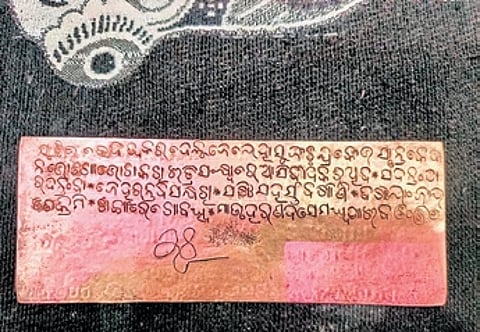

BHUBANESWAR: A 17th-century copper plate inscription discovered in Rayagada district’s Gunupur could provide more insights into the history of southern Odisha.
The inscription, dated to 1649 CE, was deciphered by epigraphist Bishnu Mohan Adhikari on Thursday. Issued by Maharaja Lalakrsna Deva of the Surya Sankara dynasty of Nandapur, the inscription records a royal land grant to a religious leader, Mahanta Sahaja Rama Gosain.
The plate, measuring 19 × 7 cm, is a single copper sheet inscribed on both sides with a total of 14 lines — ten on the front and four on the reverse. The reverse also bears a royal sign-manual: a traditional Khadga Santaka, associated with the Nandapur lineage.
The script used is early-modern Odia, showcasing the transitional paleographic features of the period. This rare artifact offers valuable evidence of land distribution, regional governance, and temple-based religious institutions under the Nandapur rulers.
The inscription records the grant of two villages to Gosain for conducting religious rituals and offerings to Lord Balaji in Gunupur. The boundaries of the granted land are meticulously described, bordered by Jira, the Serama canal, the Bansabali river (Bansadhara), and Dibirisingi village, indicating a substantial and strategically located endowment.
The artifact was found on June 14 by Sadananda Panda, a retired government teacher at the residence of Trinatha Mahapatra (92). Mahapatra stated that the plate had been preserved for decades after he recovered it from the ruins of the historic Sana Jagannatha Mandira when he was in service.
Upon examination, Adhikari verified the inscription’s authenticity and successfully transliterated and translated the rare copper plate. “This discovery is significant not only because of the plate’s excellent preservation and legibility, but also for the light it sheds on the political-religious patronage system of 17th-century southern Odisha,” said Adhikari.